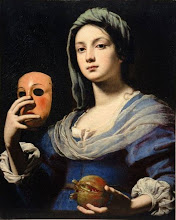Kahlil Gibran and the Feminine Divine
JEPSON CENTERApril 21, 2017–January 2, 2018
Renowned for his literary masterpiece The Prophet(1923), Lebanese-American artist and writer Kahlil Gibran (1883–1931) began experimenting with the visual arts at a young age. Telfair Museums boasts the largest public collection of visual art by Kahlil Gibran in the United States, donated in 1950 by his lifelong supporter and mentor, Southern native Mary Haskell Minis. This exhibition concentrates on works that capture Gibran’s enduring belief in the oneness of all things, often characterized in his paintings and drawings as the feminine divine.
His representation of goddess imagery not only reflects his holistic belief in a Universal Spirit, embodied through symbolic female figures, but also reveals the powerful influence women exerted in his own life, molding him into the visionary poet and artist known to the world today. Gibran’s visual and literary works continue to inspire and resonate, as evidenced through contemporary women artists like Sawsan Al-Saraf, Sundus Abdul Hadi, and Tamara Abdul Hadi, whose work will be presented from May 26 through September 10 in the Jepson Center, creating a powerful dialogue between exhibitions.
Funding is provided by the City of Savannah’s Department of Cultural Affairs.
Kahlil Gibran
Mother Earth from Earth Gods, c. 1931
watercolor and pencil on paper
gift of Mary Haskell Minis, 1950; 1950.8.10
Mother Earth from Earth Gods, c. 1931
watercolor and pencil on paper
gift of Mary Haskell Minis, 1950; 1950.8.10




















